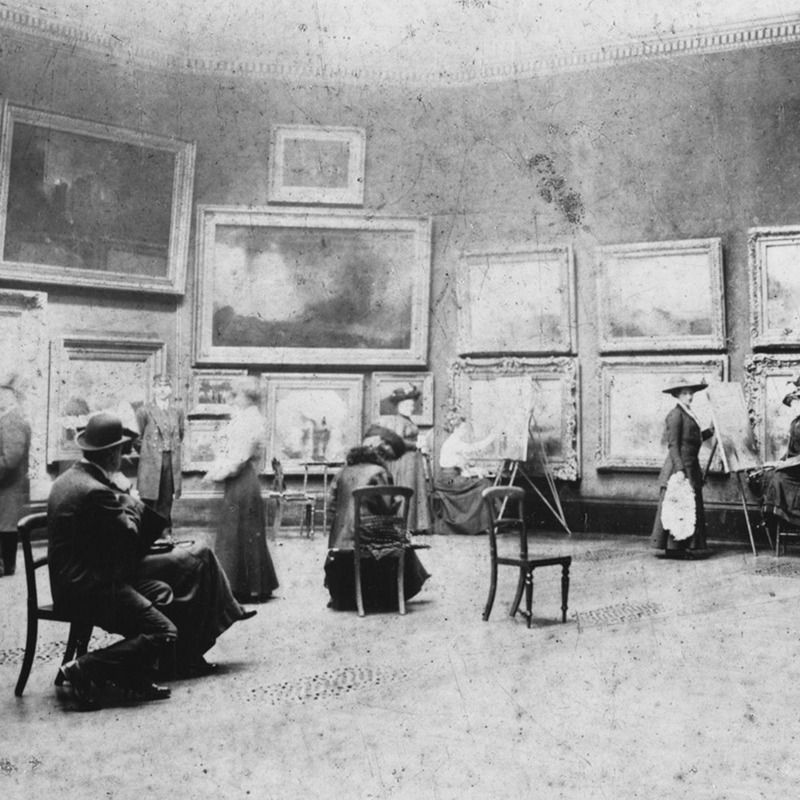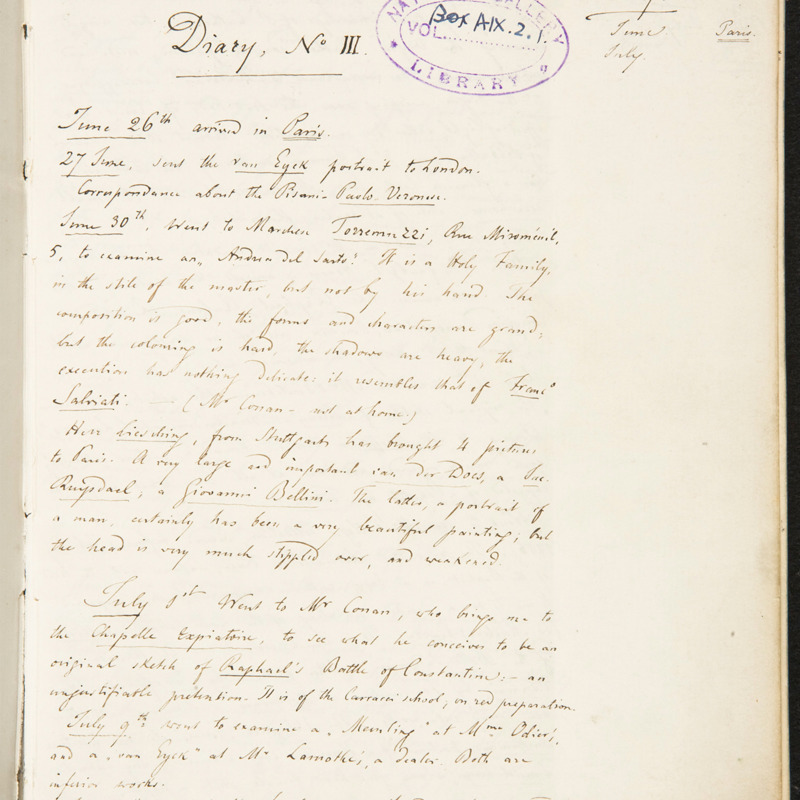Artists in residence
Inside the artist's studio at the National Gallery
The National Gallery has always been there to inspire and nurture artists. This was the mission behind the Gallery's Artist-in-Residence programme and since it was launched in the 1980s, it has given a platform to many artists. Let's take a look at its beginnings and how one artist in particular made her mark at the Gallery.
Building the programme
Our first Artist-in-Residence programme was launched in collaboration with the Arts Council from 1980 to 1989. Nine emerging artists were invited in succession to work in the National Gallery artists’ studios for about six months. This was a great opportunity to connect visitors with living artists and for the artists to be creative in an inspiring space.
In the studio, the chosen artist would often make studies of works from the collection. The very first Artist-in-Residence, Maggi Hambling, remembers: ‘I drew the paintings that moved me.’ After the programme ended, each artist donated a work they had made to the National Gallery Collection.
Contemporary artists at the Gallery
Following the success of the first programme, in 1990 the initiative evolved into the Associate Artist scheme. This invited established contemporary artists to get inspired by the National Gallery Collection. Bridging the gap between great paintings of the past and contemporary art, the goal was for the artists to create a new work in response to the collection. Like the first programme, nine artists were provided with studio space, this time for between one and three years.
Bringing more women into the Gallery
Paula Rego was the first Associate Artist at the National Gallery. However, her initial response was to decline the invitation to join the programme.
Even though we are taking steps to increase representation in our collection today, the majority of paintings have historically been by male artists. In 1990, Rego recognised this and, for this reason, didn't want to be a part of the Associate Artist programme at first.
On reflection, Rego realised that the residency would allow her to engage with the very male canon of art history and insert her voice within it. She decided to accept the position and started her two-year residency.
Rego's residency
Rego's studio was in the Gallery basement. Inspired by the works of art living above her, she remembers: 'I would creep upstairs [into the Gallery] and snatch things and bring them down to my basement.'
Rego was known for her works based on traditional folk tales, often showing female figures and saints at the centre of her stories. Her style was different from many of the artists in the collection but this was exactly what the programme was all about.
Crivelli’s Garden
Towards the end of her residency, Rego was asked to create a mural-size painting for the Gallery’s then restaurant, the National Dining Rooms. She was inspired by a 15th-century altarpiece by Carlo Crivelli.
Rego’s ‘Crivelli’s Garden’ tells the story of women from biblical history and folklore. Some of the women featured in the painting were based on friends, family and even Gallery staff. This included the Gallery’s educator Ailsa Bhattacharya and lecturer Lizzie Perrotte. It also included the Head of the Education Department, Erika Langmuir, who brought the lives of many female saints to Rego’s attention.
This is a YouTube video player. Below the video are the title, view time and description. Below that is a carousel of video thumbnails. Clicking a thumbnail will load and play that video.
In 2023, one year after Rego’s death, her mural ‘Crivelli’s Garden’ was moved from the restaurant. It was exhibited in the Gallery for the first time, facing the altarpiece that inspired it. For some time it was also displayed in the entrance to the staff offices.
The National Gallery continues to run residency programmes for artists today to be inspired by art of the past. Like Rego and many others, artists continue to bring new perspectives and be inspired by the collection.










